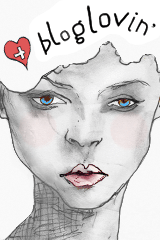Manet. Return to Venice
0
Manet. Ritorno a Venezia è il titolo della mostra che la Fondazione Musei Civici di Venezia ospita dal 24 aprile al 18 agosto 2013 nelle monumentali sale di Palazzo Ducale. La mostra, che guida il visitatore tra i grandi capolavori del passato, come Le fifre (1866), La lezione (1865-1873), Le balcon (1869), Sur la plage (1873), Portrait de Mallarmé (ca. 1876), ecc , farà luce su tutta la vita artistica di Manet, con riferimenti più o meno espliciti al suo mondo privato "intricato". L'influenza di Venezia emerge immediatamente, ed è inseparabile dal coraggio con cui il pittore ha sondato l'arte contemporanea e si allontanò dalla convenzione accademica.
Sarà emozionante vedere riunite, in particolare, la Olympia di Manet (1867) – opera che lascia per la prima volta la Francia – e la Venere di Urbino di Tiziano (1538) prestata eccezionalmente dalla Galleria degli Uffizi: il dipinto che l’artista ammirò a Firenze e da cui trasse ispirazione per raffigurare la sua sfrontata “femme de plaisir”. Un confronto “storico” tra due diverse “modernità”, tra due icone dell’arte universale.
Manet. Return to Venice is the name of the exhibition the Fondazione Musei Civici di Venezia will host from 24th April to 18th August 2013 in the monumental rooms of the Doge’s Palace. The exhibition, which guides the visitor past great masterpieces, such as Le fifre (1866), La lecture (1865-73), Le balcon (1869), Sur la plage (1873), Portrait de Mallarmé (ca. 1876) etc., will shed light on all of Manet’s artistic life, with more or less explicit references to his “intricate” private world. The influence of Venice immediately emerges, and is inseparable from the boldness with which the painter probed contemporary art and moved away from academic convention.
It will be exciting to see together, in particular, Manet's Olympia (1867) - a work that leaves France for the first time - and the Venus of Urbino by Titian (1538) exceptionally loaned by the Uffizi Gallery: the painting that the artist looked Florence and from which inspiration was to represent his "femme de plaisir". A comparison between two icons of universal art.
















.jpg)








